Step Back in Time: Visit the Historic Wenjiashi Meeting Site of the Autumn Harvest Uprising

An Essential Guide to Visiting Autumn Harvest Uprising Wenjiashi Meeting Site
In This Guide
- An Essential Guide to Visiting Autumn Harvest Uprising Wenjiashi Meeting Site
- The Rich History and Legends of Autumn Harvest Uprising Wenjiashi Meeting Site
- Main Highlights: What You Absolutely Can’t Miss
- Planning Your Visit: A Practical Guide
- Tickets: Prices, Booking, and Tips
- How to Get There: A Complete Transportation Guide
- Local Cuisine and Accommodation Nearby
- Frequently Asked Questions
- Final Thoughts on Your Trip
The Autumn Harvest Uprising Wenjiashi Meeting Site stands as a poignant reminder of a critical chapter in China’s revolutionary history. Nestled in the lush landscapes of Hunan Province, this site is not just a relic of the past; it serves as a living testament to the courage and aspirations of those who sought to reshape their nation through struggle and sacrifice.
As you step onto the grounds, you are enveloped by an atmosphere steeped in historical significance. It was here, in September 1927, that Mao Zedong and his comrades regrouped after a series of harrowing military engagements during the Autumn Harvest Uprising. The meeting site is where strategies and hopes were discussed amid the backdrop of a tumultuous political landscape. The Uprising itself, marked by the collective efforts of peasants, miners, and soldiers alike, aimed to challenge the existing order, illustrating the deep-rooted discontent that permeated Chinese society at the time.
Visiting Wenjiashi is more than just a journey through time; it’s an invitation to delve into the complexities of a movement that helped shape modern China. From learning about the diverse participants—like the Lu Deming Regiment and the Anyuan miners—to understanding the broader implications of their actions, visitors will find themselves entwined in the narratives of bravery, betrayal, and the relentless pursuit of justice.
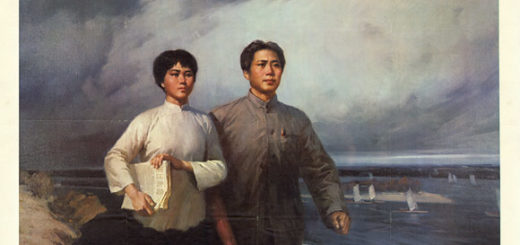
Autumn Harvest Uprising Wenjiashi Meeting Site.
Whether you are a history enthusiast, a cultural explorer, or someone seeking to understand the struggles that have defined China, the Autumn Harvest Uprising Wenjiashi Meeting Site offers invaluable insights. Here, you can reflect on the past, appreciate the present, and consider the enduring lessons that echo through the annals of history. Prepare to be inspired as you uncover the stories of resilience and hope that continue to resonate in this remarkable location.
The Rich History and Legends of Autumn Harvest Uprising Wenjiashi Meeting Site
Nestled in the heart of Hunan Province, the Wenjiashi Meeting Site is a historical landmark that encapsulates the fervor and turmoil of the Autumn Harvest Uprising—one of the pivotal events in the early years of the Chinese Communist movement. This site bears witness not just to military strategies and battles, but also to the dreams and struggles of a people yearning for change.
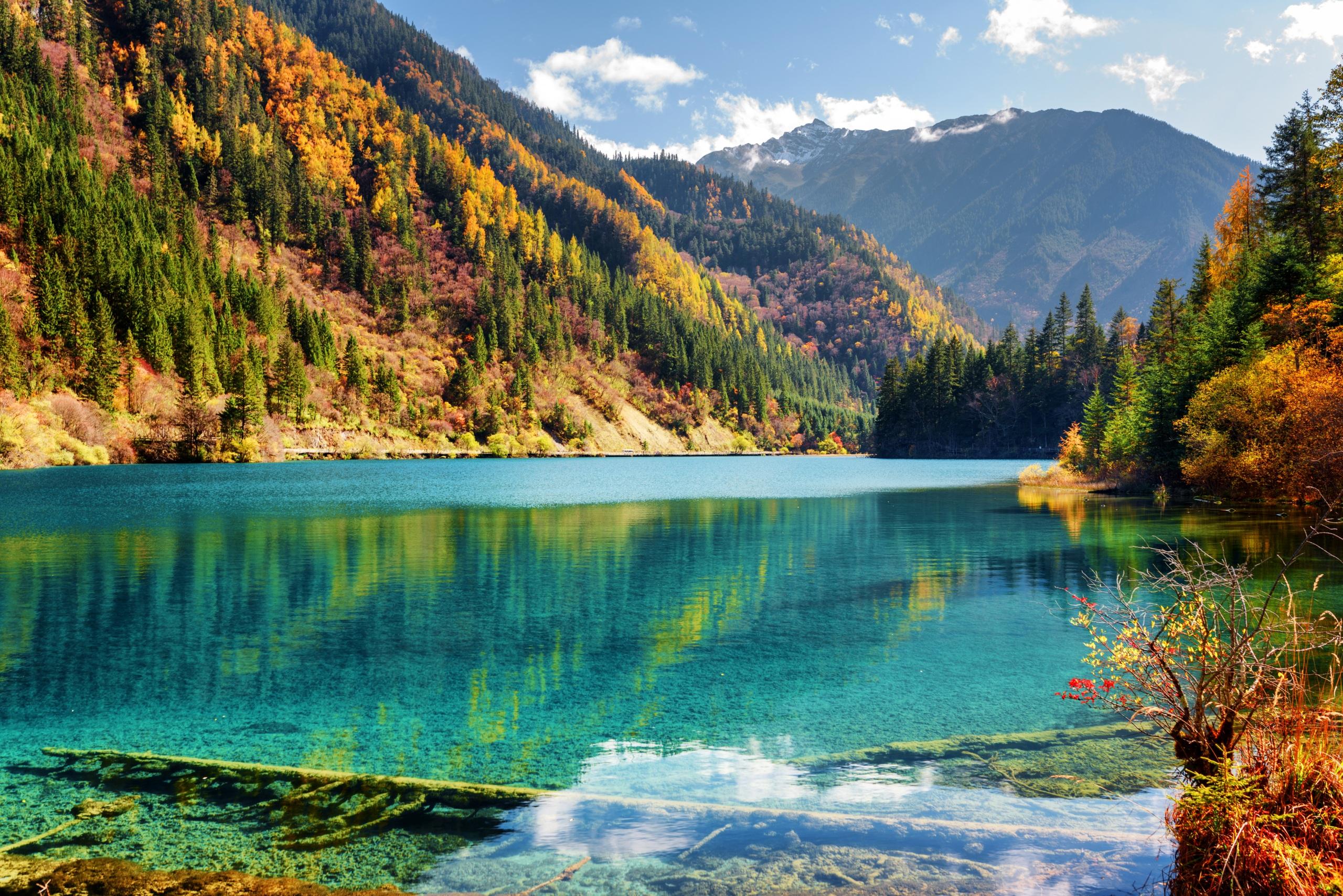
Autumn Harvest Uprising Wenjiashi Meeting Site.
A Crucible of Revolution
The Autumn Harvest Uprising, which erupted in September 1927, marked a significant turning point in Mao Zedong’s revolutionary career. The Wenjiashi Meeting Site served as a crucial gathering point for the remnants of the Worker-Peasant Revolutionary Army, where leaders convened to strategize amidst dire circumstances. Following a series of defeats, the forces had dwindled from approximately 5,000 to a mere 1,500, and the atmosphere was charged with urgency and uncertainty.
On September 19, 1927, a pivotal meeting took place at Wenjiashi, where Mao and his comrades debated the next steps in their struggle. With the stakes high and the pressure mounting from the Guomindang’s counterattacks, the meeting became a crucible of revolutionary thought, where ideas clashed, and strategies were forged. It was here that Mao’s leadership began to crystallize, as he advocated for a focus on rural bases of support rather than urban uprisings, a perspective that would later define his approach to revolution.
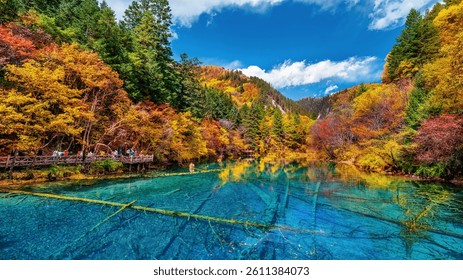
Autumn Harvest Uprising Wenjiashi Meeting Site.
Legends of Resilience
The Wenjiashi Meeting Site is steeped in legends that reflect the spirit of resilience among the revolutionaries. One story tells of how the soldiers, despite their dwindling numbers, rallied around Mao’s vision, embodying the undying hope that they could still achieve their goal of liberation. It is said that Mao inspired them with tales of past victories and the promise of a brighter future, emphasizing the importance of unity and perseverance in the face of overwhelming odds.
Another legend speaks of the enduring bond formed among the fighters during this tumultuous time. The camaraderie that developed at Wenjiashi is often romanticized in revolutionary folklore, portraying the soldiers as brothers and sisters united by a singular purpose. This bond not only sustained them through the hardships of battle but also laid the groundwork for the collective identity that would emerge in the years to follow.
The Legacy of the Site
Today, the Wenjiashi Meeting Site stands as a testament to the complexities of a revolution that reshaped China. Visitors to this historic location can explore well-preserved relics and monuments that honor the memory of those who fought bravely for their cause. The site serves as a reminder of the sacrifices made and the ideologies that fueled a movement that would eventually lead to the establishment of the People’s Republic of China in 1949.
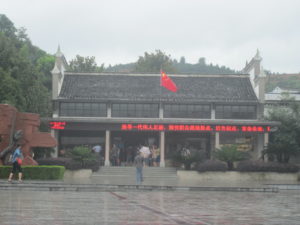
Autumn Harvest Uprising Wenjiashi Meeting Site.
In summary, the Wenjiashi Meeting Site is more than just a relic of the past; it is a symbol of hope, resilience, and the relentless pursuit of change. For international travelers and history enthusiasts, a visit to this site offers a unique opportunity to reflect on the rich tapestry of Chinese history, where legends of struggle and triumph continue to inspire generations.
Main Highlights: What You Absolutely Can’t Miss
Discover the Autumn Harvest Uprising Wenjiashi Meeting Site
Nestled in the heart of Hunan Province, the Autumn Harvest Uprising Wenjiashi Meeting Site (秋收起义文家市会师旧址) is a pivotal historical landmark that encapsulates a transformative period in Chinese history. Here’s what you absolutely can’t miss when visiting this significant site.
1. The Historical Context
Understanding the significance of Wenjiashi begins with the Autumn Harvest Uprising of 1927. This uprising marked one of the early attempts by Mao Zedong to lead a peasant revolution against the Guomindang (Nationalist Party) during a time of political upheaval. The site serves as a reminder of Mao’s strategic meetings and the consolidation of various revolutionary forces that took place here.
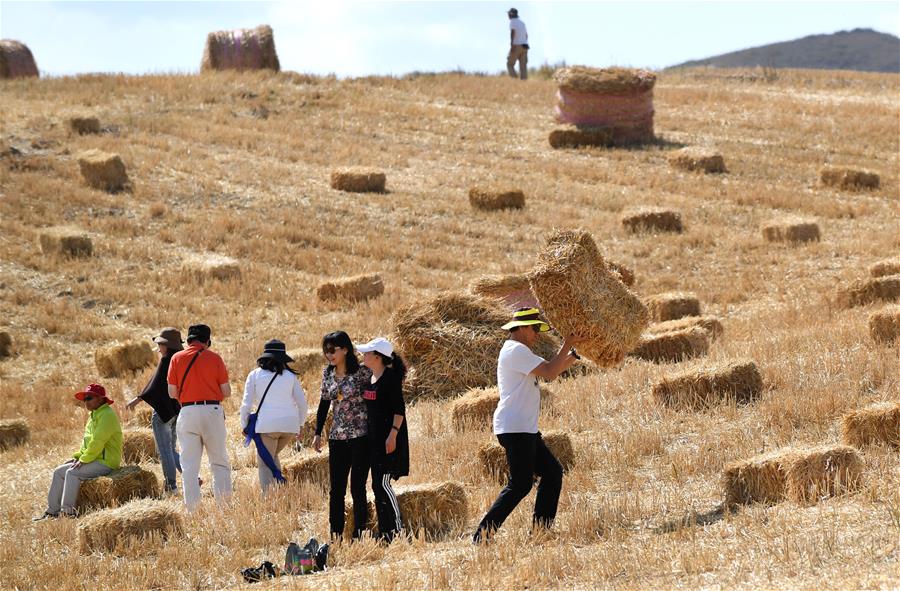
Autumn Harvest Uprising Wenjiashi Meeting Site.
2. The Meeting Hall
At the heart of the site is the Meeting Hall, where leaders such as Mao Zedong and Lu Deming gathered to strategize the uprising. The hall has been preserved to reflect its original layout, providing visitors with a palpable sense of history. Pay attention to the photographs and documents displayed around the hall, which detail the events leading up to the uprising and the leaders involved.
3. Mao Zedong’s Legacy
Mao Zedong’s presence looms large at Wenjiashi. His early leadership during the uprising laid the groundwork for his later rise to power. Visitors should not miss the exhibits dedicated to Mao, featuring personal artifacts and photographs that narrate his journey from a local leader to a national figure. Engaging with these materials deepens the appreciation of his complex role in Chinese history.
4. The Surrounding Landscape
The site is not just about the buildings; it is also about the breathtaking natural scenery that surrounds it. The lush hills and tranquil river valleys were the backdrop for the revolutionary activities of the time. Taking a leisurely walk or hike around the area allows you to reflect on the struggles faced by those who lived through this tumultuous period.
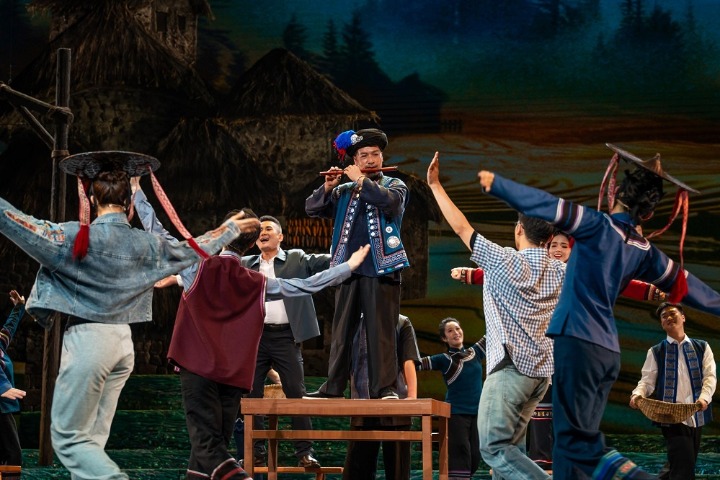
Autumn Harvest Uprising Wenjiashi Meeting Site.
5. Monuments and Memorials
Scattered throughout the grounds are monuments commemorating the participants of the Autumn Harvest Uprising. These include statues and plaques that honor the sacrifices made by the soldiers and peasants. Be sure to take a moment to read the inscriptions and reflect on the impact of their struggles on modern China.
6. Cultural Events
Depending on the season of your visit, you may have the opportunity to witness cultural events or reenactments that celebrate the uprising and its significance. These performances often include traditional music and dances, offering a vibrant glimpse into the cultural heritage of the region.
7. Visitor Center and Educational Resources
Make sure to stop by the Visitor Center, where you can find additional resources, including guided tours, educational materials, and interactive displays. The knowledgeable staff can provide valuable insights and answer any questions you may have about the historical context and significance of the site.
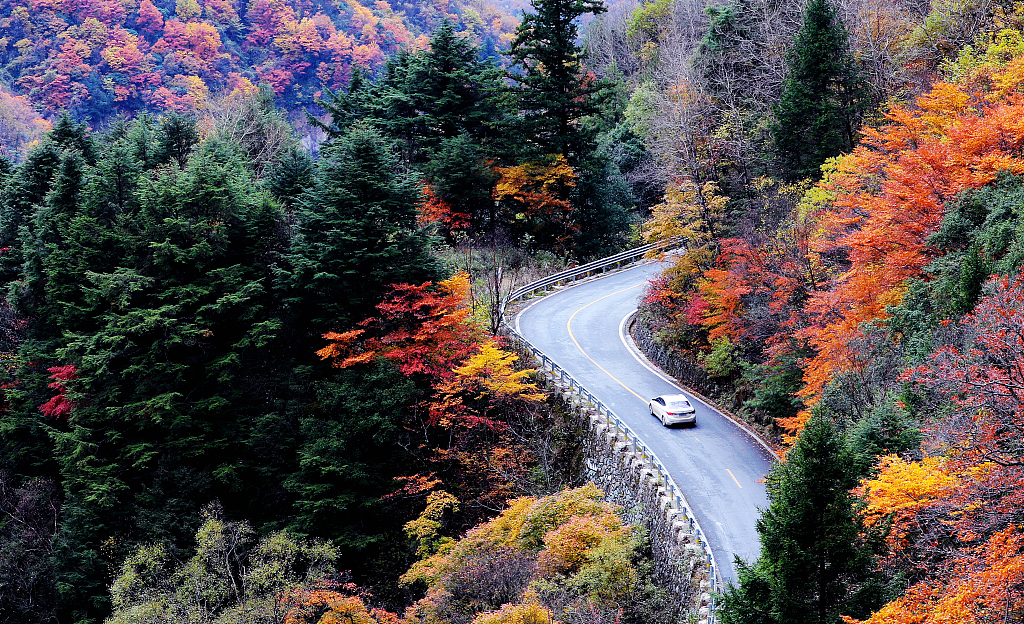
Autumn Harvest Uprising Wenjiashi Meeting Site.
8. Local Cuisine
No visit to Wenjiashi would be complete without sampling some of the local Hunan cuisine. The area is renowned for its spicy dishes, and trying out local restaurants can provide a delightful culinary experience that complements your historical exploration.
By immersing yourself in the rich history and culture of the Autumn Harvest Uprising Wenjiashi Meeting Site, you will gain a deeper understanding of the revolutionary spirit that shaped modern China. This is not just a visit to a historical site; it’s a journey through the challenges and triumphs that have defined a nation.
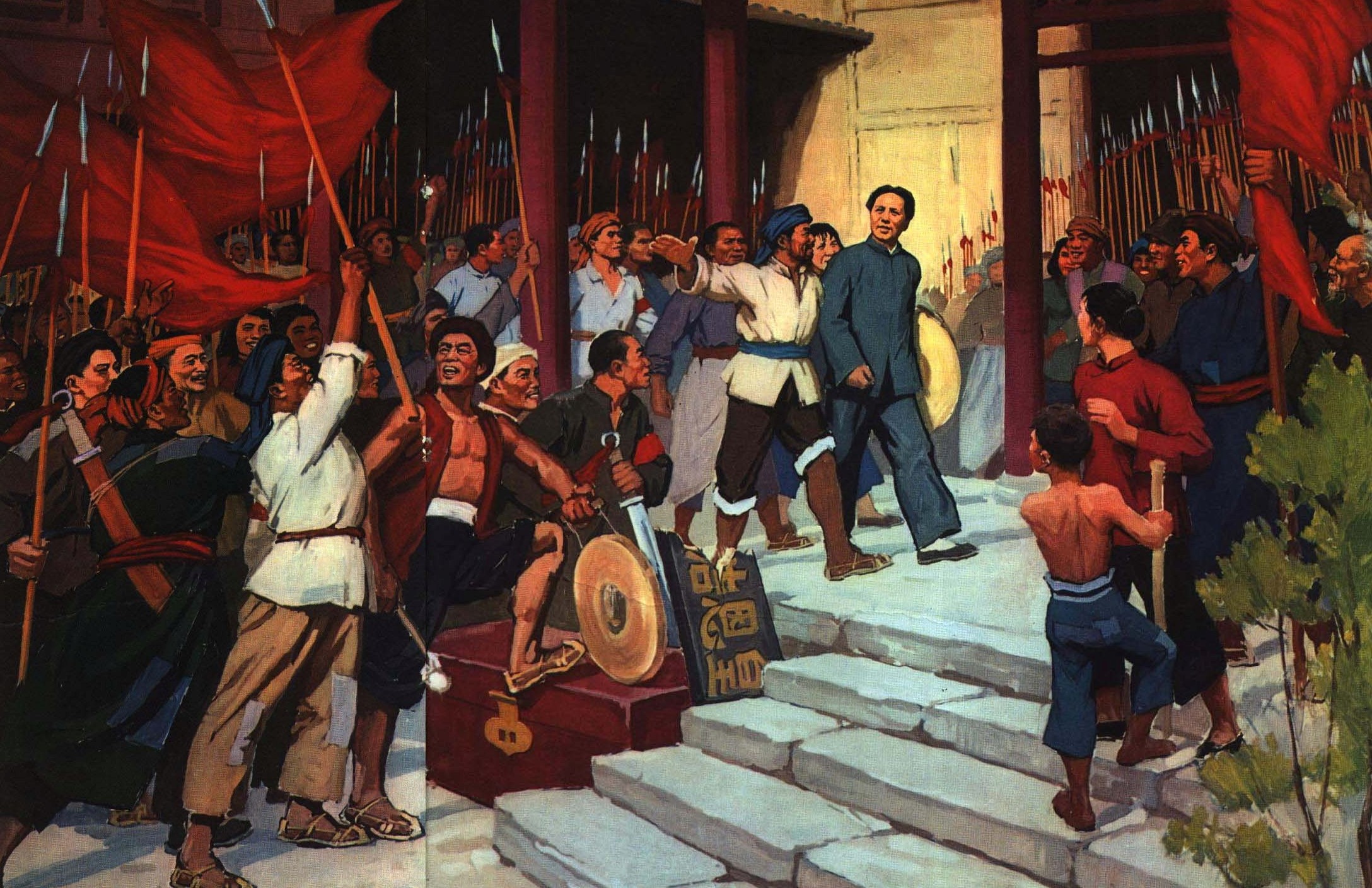
Autumn Harvest Uprising Wenjiashi Meeting Site.
Planning Your Visit: A Practical Guide
Your Practical Guide to Visiting the Autumn Harvest Uprising Wenjiashi Meeting Site
The Autumn Harvest Uprising Wenjiashi Meeting Site (秋收起义文家市会师旧址) is a historical landmark steeped in the rich tapestry of China’s early revolutionary history. As a focal point for international travelers interested in Chinese culture and history, a visit to this site offers a profound insight into the events that shaped modern China. Here’s how to plan your visit effectively.
Getting There
Location: The Wenjiashi Meeting Site is situated in Hunan Province, near the Hunan-Jiangxi border. It is easily accessible from major cities such as Changsha and Nanchang.
Transportation Options:
– By Train: High-speed trains connect Changsha to nearby cities. Once in Changsha, local trains or buses can take you to the site.
– By Bus: Frequent buses operate from Changsha to Wenjiashi. Check local schedules for the most convenient options.
– By Car: Renting a car can provide the flexibility to explore the surrounding areas at your own pace. Ensure you have GPS or a reliable map app, as signage may be limited.
Autumn Harvest Uprising Wenjiashi Meeting Site.
Best Time to Visit
The ideal time to visit the Wenjiashi Meeting Site is during the autumn months (September to November). Not only will you enjoy cooler temperatures, but you’ll also experience the vibrant fall foliage that enhances the beauty of the Hunan countryside.
What to Expect
Upon arrival, visitors will find that the site is well-preserved, offering insights into the significant events of the Autumn Harvest Uprising. Expect to see:
Autumn Harvest Uprising Wenjiashi Meeting Site.
- Memorials and Monuments: Various structures commemorate the leaders and participants of the uprising, including Mao Zedong’s pivotal role.
- Exhibitions: Informative displays outline the history of the uprising and its significance in the context of the Chinese Communist movement.
- Guided Tours: Consider joining a guided tour for a comprehensive understanding of the site’s historical context and anecdotes about the uprising.
Key Highlights
- Historical Significance: The site is where Mao Zedong and his troops regrouped after suffering heavy losses during the uprising. It represents a critical moment in the establishment of the Communist Party in China.
- Scenic Views: The surrounding area offers beautiful landscapes, perfect for photography and reflection on the historical events that unfolded here.
- Cultural Insights: Engage with local historians and guides who can offer deeper insights into the cultural implications of the uprising and its legacy in contemporary China.
Tips for Visitors
- Language: While some guides may speak English, having a translation app can enhance your experience.
- Local Cuisine: Don’t miss the opportunity to try local Hunan cuisine, known for its bold flavors and spiciness. Small eateries near the site offer authentic dishes.
- Respect the Site: As a historical landmark, it’s important to maintain a level of respect during your visit. Follow any posted guidelines and be considerate of other visitors.
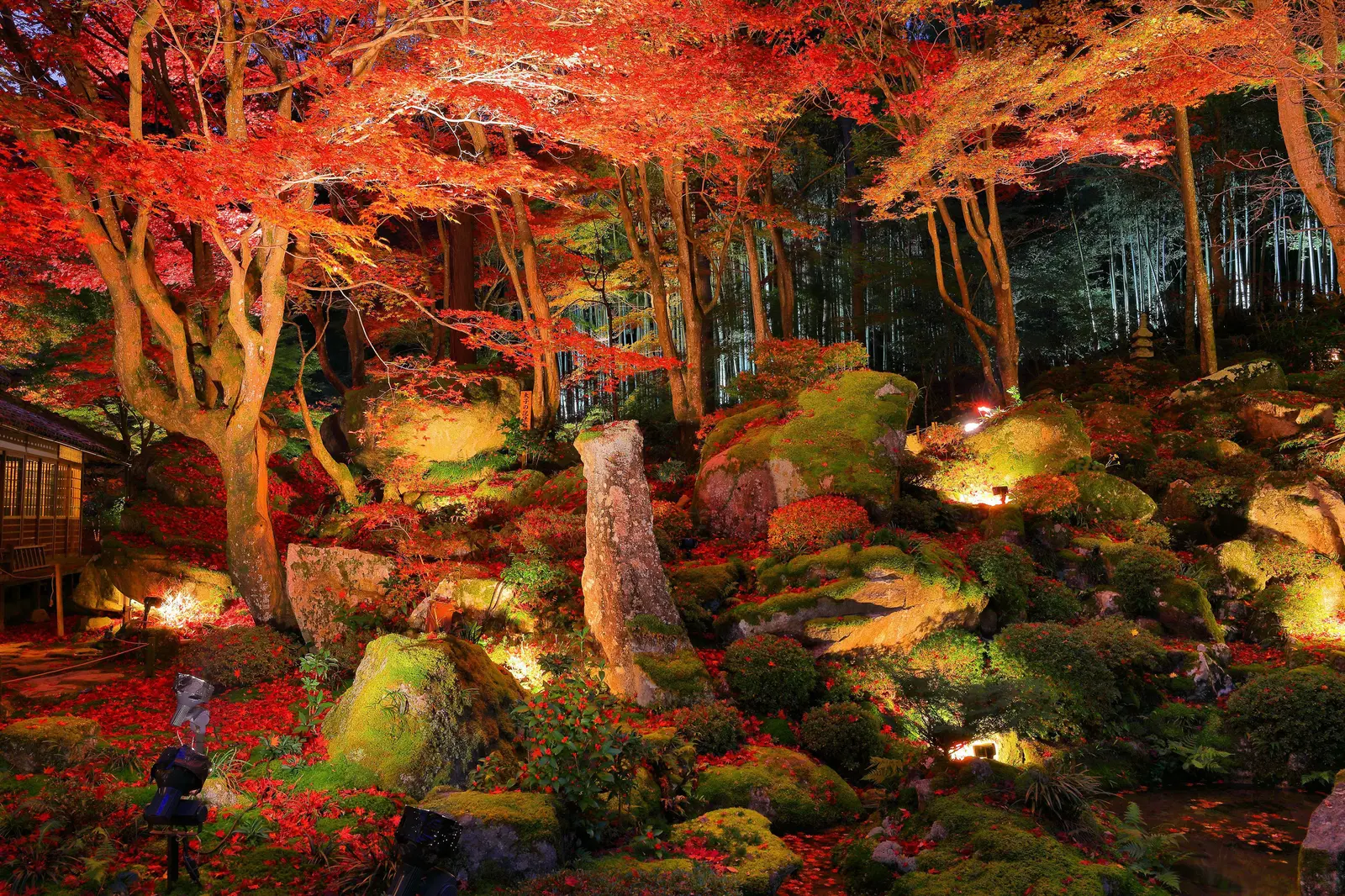
Autumn Harvest Uprising Wenjiashi Meeting Site.
Nearby Attractions
- Changsha: Just a short journey away, the capital city of Hunan offers a wealth of cultural experiences, including the Hunan Provincial Museum and the iconic Yuelu Mountain.
- Nanchang: Known for its role in the Nanchang Uprising, this city provides additional context to the events that took place during the revolutionary period.
Conclusion
Visiting the Autumn Harvest Uprising Wenjiashi Meeting Site is not just a journey through history; it’s an exploration of the struggles and triumphs that have shaped modern China. With its engaging exhibits, stunning scenery, and rich cultural significance, this site is a must-visit for anyone passionate about Chinese history and culture. Make sure to prepare adequately to fully immerse yourself in this transformative experience.

Autumn Harvest Uprising Wenjiashi Meeting Site.
Tickets: Prices, Booking, and Tips
Exploring the Autumn Harvest Uprising Wenjiashi Meeting Site: Ticket Information and Travel Tips
Visiting the Autumn Harvest Uprising Wenjiashi Meeting Site (秋收起义文家市会师旧址) offers a profound glimpse into a pivotal moment in Chinese history. This historical site not only commemorates the struggles and aspirations of the early Communist movement but also provides travelers with a unique opportunity to connect with the rich tapestry of China’s revolutionary past. Below are essential details regarding ticket prices, booking information, and helpful tips to enhance your visit.
Ticket Prices
-
General Admission: Approximately ¥30 (Chinese Yuan)
This fee grants you access to the main exhibition halls and outdoor memorial areas dedicated to the Autumn Harvest Uprising. -
Discounted Tickets:
- Students: ¥15 (with valid student ID)
- Senior Citizens: ¥15 (ages 60 and above, ID required)
-
Children: Free (under 1.2 meters in height)
-
Guided Tours:
- Group Tour Rates: If you’re traveling in a group of 10 or more, inquire about group rates which can reduce the per-person cost.
- Audio Guides: Available for rent at ¥10, providing an enriching narrative as you explore the site at your own pace.
Booking Information
-
Online Reservations:
It’s advisable to book your tickets online through the official site or authorized travel platforms, especially during peak tourist seasons (autumn and spring). Booking in advance secures your entry and allows for a smoother visit. -
On-Site Purchase:
Tickets can also be purchased at the entrance, but availability may be limited, especially during weekends and holidays. Arriving early is recommended if you choose this option.
Visiting Hours
- Daily Opening Hours: 8:30 AM – 5:30 PM (last entry at 4:30 PM)
Plan your visit accordingly to allow ample time for exploration, as the site encompasses multiple areas of interest that depict the historical significance of the Uprising.
Travel Tips
-
Getting There:
The site is located in Wenjiashi, Hunan Province, and is accessible by public transportation. Consider taking a local bus or taxi from nearby cities such as Changsha or Nanchang. If you prefer driving, ample parking is available. -
What to Wear:
Since much of the site is outdoors, wear comfortable shoes suitable for walking. The terrain can be uneven, so be prepared for some light hiking. -
Best Time to Visit:
Autumn is particularly beautiful here, with the surrounding landscape showcasing vibrant foliage. Additionally, visiting during weekdays can help you avoid large crowds. -
Engage with Local Guides:
For a deeper understanding of the historical context, consider hiring a local guide. They can provide insights into the Uprising’s significance and the key figures involved, enriching your overall experience. -
Respect the Space:
As a site of historical importance, maintain decorum and respect the memorials and exhibits. Photography is generally permitted, but be mindful of any signage regarding restrictions.
By immersing yourself in the history at the Autumn Harvest Uprising Wenjiashi Meeting Site, you will not only learn about a crucial chapter in China’s revolutionary history but also gain a deeper appreciation for the cultural and historical fabric of the region. Enjoy your journey through time at this remarkable site!
How to Get There: A Complete Transportation Guide
Navigating Your Way to the Autumn Harvest Uprising Wenjiashi Meeting Site
Visiting the Wenjiashi Meeting Site (秋收起义文家市会师旧址), a significant historical landmark associated with the Autumn Harvest Uprising, offers travelers a deep dive into a pivotal moment in Chinese history. This guide will help you navigate your way to this important site, ensuring a smooth journey filled with cultural exploration.
Getting There by Air
Nearest Airport:
– Changsha Huanghua International Airport (CSX)
Located approximately 50 kilometers from the Wenjiashi Meeting Site, this airport services both domestic and international flights.
Transportation from the Airport:
– Taxi: The most convenient option. Expect a fare of around 150-200 RMB (approximately $22-30) and a travel time of about 1 to 1.5 hours, depending on traffic.
– Airport Shuttle: Some buses run to Changsha city center, where you can catch a local bus or taxi to the meeting site.
Traveling by Train
Main Train Station:
– Changsha Railway Station
This major hub connects to various cities across China.
From Changsha to Wenjiashi:
1. Take a Train to Zhuzhou:
– Duration: Approximately 30-40 minutes.
– Ticket Price: Ranges from 30 to 60 RMB ($5-9) depending on the train class.
- Continue to Liuyang:
-
From Zhuzhou, transfer to a train heading to Liuyang, which takes about 30 minutes.
-
Final Leg to Wenjiashi:
- Local Transport: Upon arriving in Liuyang, you can take a taxi or a local bus to Wenjiashi, which is about 20 kilometers away (approximately 30 minutes). Taxi fares typically range from 50 to 100 RMB ($7-15).
Bus Services
For a more budget-friendly option, long-distance buses operate from Changsha to Liuyang.
- Departure Points:
-
Changsha Bus Terminal (长沙汽车站) or South Bus Station (南部汽车站).
-
Duration: Approximately 1-1.5 hours, depending on traffic.
-
Cost: Generally between 25-50 RMB ($4-7).
Once in Liuyang, use local taxis or buses to reach Wenjiashi.
Local Transportation in Wenjiashi
Once you arrive in Wenjiashi, the site itself is accessible via:
- Walking: The meeting site is within walking distance of the town center and can be easily reached on foot.
- Bicycles: Renting a bicycle can be a delightful way to explore the local area and enjoy the scenic landscapes.
Tips for Your Journey
- Language: Basic knowledge of Mandarin will be helpful, as English may not be widely spoken. Consider using translation apps or carrying a phrasebook.
- Cultural Sensitivity: While visiting historical sites, be respectful of the local customs and practices.
- Timing: The best time to visit is during autumn (September to November) when the weather is mild and the foliage is beautiful.
- Prepare for Activities: Check ahead for any guided tours or cultural events that may be taking place to enhance your experience.
Conclusion
The journey to the Autumn Harvest Uprising Wenjiashi Meeting Site is not only a trip through modern transport networks but also through the rich tapestry of Chinese history. By following this guide, you’ll ensure a smooth and enriching visit to a site that played a crucial role in shaping contemporary China. Safe travels!
Local Cuisine and Accommodation Nearby
Exploring the Autumn Harvest Uprising Wenjiashi Meeting Site offers travelers not only a deep dive into China’s revolutionary history but also a delightful opportunity to savor local cuisine and find comfortable accommodations nearby.
Local Cuisine
Hunan Province is renowned for its bold flavors and fragrant dishes, which reflect the region’s agricultural bounty and rich culinary traditions. When visiting the Wenjiashi Meeting Site, you’ll want to indulge in some of the following local specialties:
-
Spicy Fish Head Stew (剁椒鱼头): A signature dish of Hunan, this stew features fish heads cooked in a spicy chili paste. The dish is both aromatic and flavorful, showcasing the region’s love for spices.
-
Chairman Mao’s Red Braised Pork (毛氏红烧肉): Named after the famous leader himself, this dish combines tender pork belly braised in soy sauce, sugar, and spices until it reaches a melt-in-your-mouth consistency.
-
Steamed Fish with Chopped Chili (剁椒蒸鱼): This dish highlights the freshness of local fish, steamed to perfection and topped with a generous helping of chopped chili peppers, making for a zesty and invigorating meal.
-
Hunan-style Hot Pot (湖南火锅): Gather with friends or fellow travelers to enjoy a communal hot pot experience. Select from a variety of fresh vegetables, meats, and spices to create your own unique flavors.
-
Stinky Tofu (臭豆腐): For the adventurous eater, this fermented tofu dish is a must-try. Despite its pungent aroma, it’s typically deep-fried and served with a spicy dipping sauce, yielding a crunchy exterior and soft interior.
Nearby Accommodations
When it comes to finding a place to rest after a day of exploration, there are several options near the Wenjiashi Meeting Site that cater to varying preferences and budgets:
-
Wenjiashi Hotel (文家市酒店): Located conveniently close to the meeting site, this hotel offers comfortable rooms and modern amenities. Its on-site restaurant serves local Hunan dishes, allowing guests to experience authentic flavors without venturing far.
-
Hunan Xiangjing Hotel (湖南湘景酒店): A short drive from the site, this hotel boasts spacious rooms and friendly service. Guests can enjoy a mix of Chinese and international cuisines in the hotel restaurant.
-
Xiangxi Youth Hostel (湘西青年旅舍): Perfect for budget travelers, this hostel offers a cozy and social atmosphere. It is a great base for exploring the local area and meeting fellow travelers.
-
Airbnb Options: Consider booking a local Airbnb to experience the region from a resident’s perspective. Many listings offer unique accommodations, such as traditional homes or modern apartments, providing a more personalized touch to your stay.
Conclusion
Your visit to the Autumn Harvest Uprising Wenjiashi Meeting Site is not just a journey through history; it’s also an opportunity to embrace the vibrant flavors of Hunan cuisine and find a welcoming place to stay. Whether you’re savoring a bowl of spicy fish head stew or resting in a comfortable hotel, the region promises a memorable experience that connects you with its rich cultural heritage.
Frequently Asked Questions
Frequently Asked Questions about the Autumn Harvest Uprising Wenjiashi Meeting Site
1. What is the significance of the Wenjiashi Meeting Site?
The Wenjiashi Meeting Site is historically significant as the location where the remnants of the Communist forces regrouped following the failed Autumn Harvest Uprising in 1927. This uprising marked the early stages of armed struggle led by Mao Zedong and was pivotal in shaping the trajectory of the Chinese Communist Party’s military strategies.
2. How can I get to the Wenjiashi Meeting Site?
The Wenjiashi Meeting Site is located in the Hunan province of China. The most convenient way to reach it is by taking a train or bus to the city of Changsha, followed by a local bus or taxi to Wenjiashi. Make sure to check local transportation schedules ahead of time for the best routes.
3. What can I expect to see at the site?
Visitors to the Wenjiashi Meeting Site can explore various memorials and exhibits dedicated to the Autumn Harvest Uprising. There are informative displays detailing the uprising’s history, key figures involved, and the broader context of the Chinese revolutionary movement. The site also features beautiful natural surroundings, providing a reflective atmosphere.
4. Are there guided tours available?
Yes, guided tours are often available at the Wenjiashi Meeting Site. These tours are led by knowledgeable local historians who can provide deeper insights into the events of the Autumn Harvest Uprising and the significance of the location. It’s recommended to inquire about tour availability in advance, especially during peak travel seasons.
5. Is there an entry fee to visit the site?
Typically, there is no entry fee for visiting the Wenjiashi Meeting Site, as it is a public historical site. However, some special exhibitions or guided tours may have a nominal charge. Always check ahead for the latest information regarding potential fees.
6. What is the best time of year to visit?
Autumn is a particularly beautiful time to visit the Wenjiashi Meeting Site, as the surrounding landscape is adorned with vibrant fall colors. Additionally, the weather is generally mild and comfortable for outdoor exploration. However, the site can be visited year-round.
7. Are there accommodations nearby?
Yes, there are various accommodations in nearby towns and cities, including hotels and guesthouses. Changsha, being the closest major city, offers a wide range of lodging options from budget to luxury. Booking ahead is advisable, especially during weekends and holidays.
8. What should I know about the local culture and customs?
When visiting the Wenjiashi Meeting Site, it’s important to be respectful of the solemn history it represents. Familiarize yourself with local customs, such as greetings and general etiquette, to enhance your experience. Engaging with local historians and guides can also provide valuable context about both the site and the broader cultural landscape of the region.
Final Thoughts on Your Trip
As you conclude your visit to the Autumn Harvest Uprising Wenjiashi Meeting Site, take a moment to reflect not only on the historical significance of this location but also on the indomitable spirit of the individuals who once gathered here. This site is not merely a remnant of the past; it stands as a testament to the struggle, resilience, and aspirations of those who sought change during a turbulent period in Chinese history.
Embracing the Legacy
The Autumn Harvest Uprising marked a pivotal moment in the evolution of the Chinese Communist movement, led by Mao Zedong and his comrades. As you walk through the grounds, consider the strategic decisions made, the alliances formed, and the hardships endured. The Uprising was characterized by both ambition and miscalculation, resonating deeply with the complexities of any revolutionary struggle.
A Journey of Discovery
Your exploration of this site offers a unique opportunity to engage with the rich tapestry of Chinese history. Here are a few reflections to enhance your experience:
-
Understand the Context: The Uprising was not just about armed conflict; it was about the mobilization of the peasantry and the quest for social justice. This historical backdrop adds depth to your understanding of modern China.
-
Appreciate the Pioneers: The leaders and fighters who gathered here were not just historical figures; they were visionaries who shaped the course of a nation. Their courage and determination can inspire your own journey, whether in travel or in life.
-
Connect with Local Culture: Take the opportunity to engage with local residents and learn about their interpretations of this history. Their stories, intertwined with the legacy of the Uprising, enrich your experience and provide a personal connection to the events that unfolded here.
Final Thoughts
As you leave the Wenjiashi Meeting Site, carry with you the lessons of resilience, hope, and the relentless pursuit of justice that echo through the ages. Every step you take in this historic landscape is a reminder of the sacrifices made for a vision of a better future. May your journey inspire you to not only appreciate the past but also to engage thoughtfully with the present and future, wherever your travels may lead you. Safe travels!